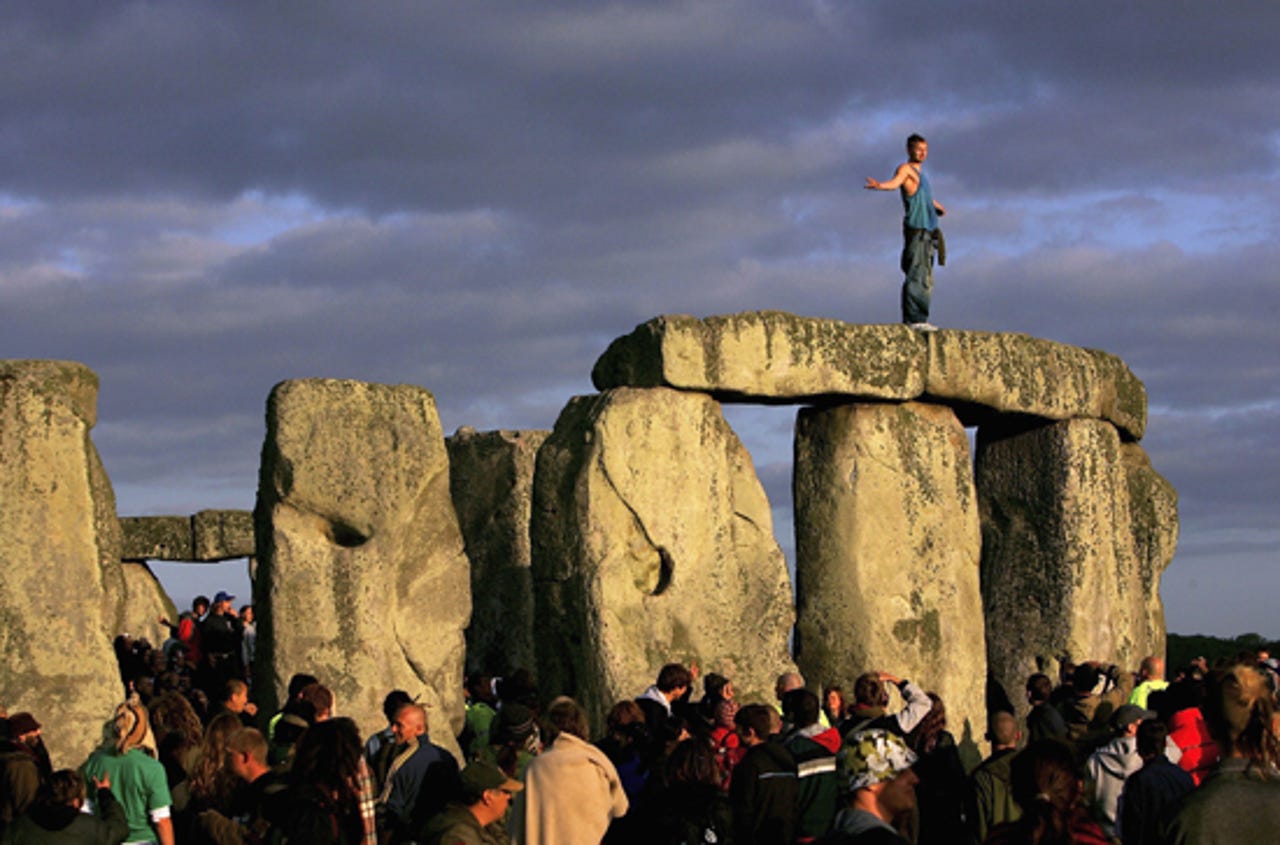Photos: Stonehenge's day in the sun


Summer solstice
A man stands on top of Stonehenge as the sun rises on June 21, 2006, in Amesbury, England. An estimated 19,000 people celebrated the start of the longest day of the year at the 5,000-year-old stone circle. Reportedly, only four arrests were made at the all-night party.
Stonehenge
Construction around the Neolithic and Bronze Age monument has been dated as far back as 3100 BC--with the stones being erected between 2500 and 2000 BC. There are many stories about who built the monument. One of the most popular theories says that it was built by Druids, Celtic priests who supposedly used it for sacrificial ceremonies. How the mammoth stones were moved by a society with Stone Age technology has confounded experts and led many to believe in extraterrestrial assistance.
Sunset 2005
The summer solstice at Stonehenge became a pilgrimage for present-day druids and other modern visitors in the 1870s. In 1905, the Ancient Order of Druids first recreated Druidic practices to celebrate the longest day of the year. The celebrations grew until 1985, when 30,000 pilgrims attended a celebration that ended in a violent confrontation with police. This resulted in a ban on summer solstice visitors that lasted until 2000.
Google Earth
Could the builders ever have imagined seeing their site from Google Earth? (Well, possibly, if aliens really did pitch in.)
Carhenge
And here are some instructions to help you build your own Stonehenge.
Stonehenge watch
The Stonehenge watch can be purchased from Sharpe Products for $42.95.
Stonefridge
Stonefridge is a Stonehenge replica built from refrigerators in Sante Fe, N.M.
Foamhenge
Next stop is Natural Bridge, Va., where Foamhenge was erected in a day. It's made out of Styrofoam.